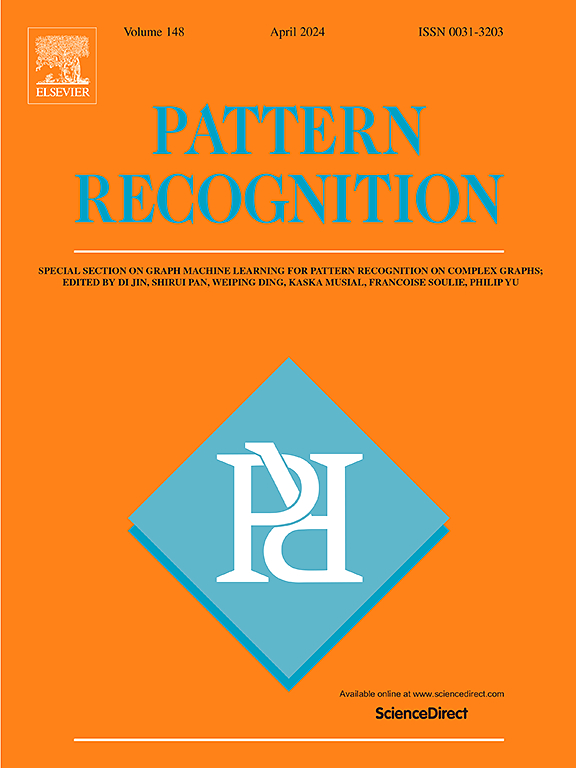DSCIMABNet: A novel multi-head attention depthwise separable CNN model for skin cancer detection
IF 7.5
1区 计算机科学
Q1 COMPUTER SCIENCE, ARTIFICIAL INTELLIGENCE
引用次数: 0
Abstract
Skin cancer is a common type of cancer worldwide. Early diagnosis of skin cancer can reduce the risk of death by increasing treatment success. However, it is challenging for dermatologists or specialists because the symptoms are vague in the early stages and cannot be noticed by the naked eye. This study examines digital diagnostic techniques supported by artificial intelligence, focusing on early skin cancer detection and two methods have been proposed. In the first method, DSCIMABNet deep learning architecture was developed by combining multi-head attention and depthwise separable convolution techniques. This model provides flexibility in learning the dataset's local features, abstract concepts, and long-term relationships. The DSCIMABNet model and modern deep learning models trained on ImageNet are proposed to be combined with the ensemble learning method in the second method. This approach provides a comprehensive feature extraction process that will increase the performance of the classification process with ensemble learning. The proposed approaches are trained and evaluated on the ISIC 2018 dataset with image enhancement applied in preprocessing. In the experimental results, DSCIMABNet achieved 84.28% accuracy, while the proposed hybrid method achieved 99.40% accuracy. Moreover, on the Mendeley dataset (CNN for Melanoma Detection Data), DSCIMABNet achieved 92.58% accuracy, while the hybrid method achieved 99.37% accuracy. This study may significantly contribute to developing new and effective methods for the early diagnosis and treatment of skin cancer.
DSCIMABNet:用于皮肤癌检测的新型多头注意力深度可分离 CNN 模型
皮肤癌是全球常见的一种癌症。皮肤癌的早期诊断可以提高治疗成功率,从而降低死亡风险。然而,这对皮肤科医生或专科医生来说具有挑战性,因为皮肤癌早期症状模糊,肉眼无法察觉。本研究以早期皮肤癌检测为重点,研究了人工智能支持下的数字诊断技术,并提出了两种方法。在第一种方法中,结合多头注意力和深度可分离卷积技术,开发了 DSCIMABNet 深度学习架构。该模型可灵活学习数据集的局部特征、抽象概念和长期关系。在第二种方法中,建议将 DSCIMABNet 模型和在 ImageNet 上训练的现代深度学习模型与集合学习方法相结合。这种方法提供了一个全面的特征提取过程,将通过集合学习提高分类过程的性能。所提出的方法在 ISIC 2018 数据集上进行了训练和评估,并在预处理中应用了图像增强。在实验结果中,DSCIMABNet 的准确率达到 84.28%,而提出的混合方法的准确率达到 99.40%。此外,在 Mendeley 数据集(用于黑色素瘤检测数据的 CNN)上,DSCIMABNet 实现了 92.58% 的准确率,而混合方法实现了 99.37% 的准确率。这项研究将大大有助于开发新的、有效的皮肤癌早期诊断和治疗方法。
本文章由计算机程序翻译,如有差异,请以英文原文为准。
求助全文
约1分钟内获得全文
求助全文
来源期刊

Pattern Recognition
工程技术-工程:电子与电气
CiteScore
14.40
自引率
16.20%
发文量
683
审稿时长
5.6 months
期刊介绍:
The field of Pattern Recognition is both mature and rapidly evolving, playing a crucial role in various related fields such as computer vision, image processing, text analysis, and neural networks. It closely intersects with machine learning and is being applied in emerging areas like biometrics, bioinformatics, multimedia data analysis, and data science. The journal Pattern Recognition, established half a century ago during the early days of computer science, has since grown significantly in scope and influence.
 求助内容:
求助内容: 应助结果提醒方式:
应助结果提醒方式:


